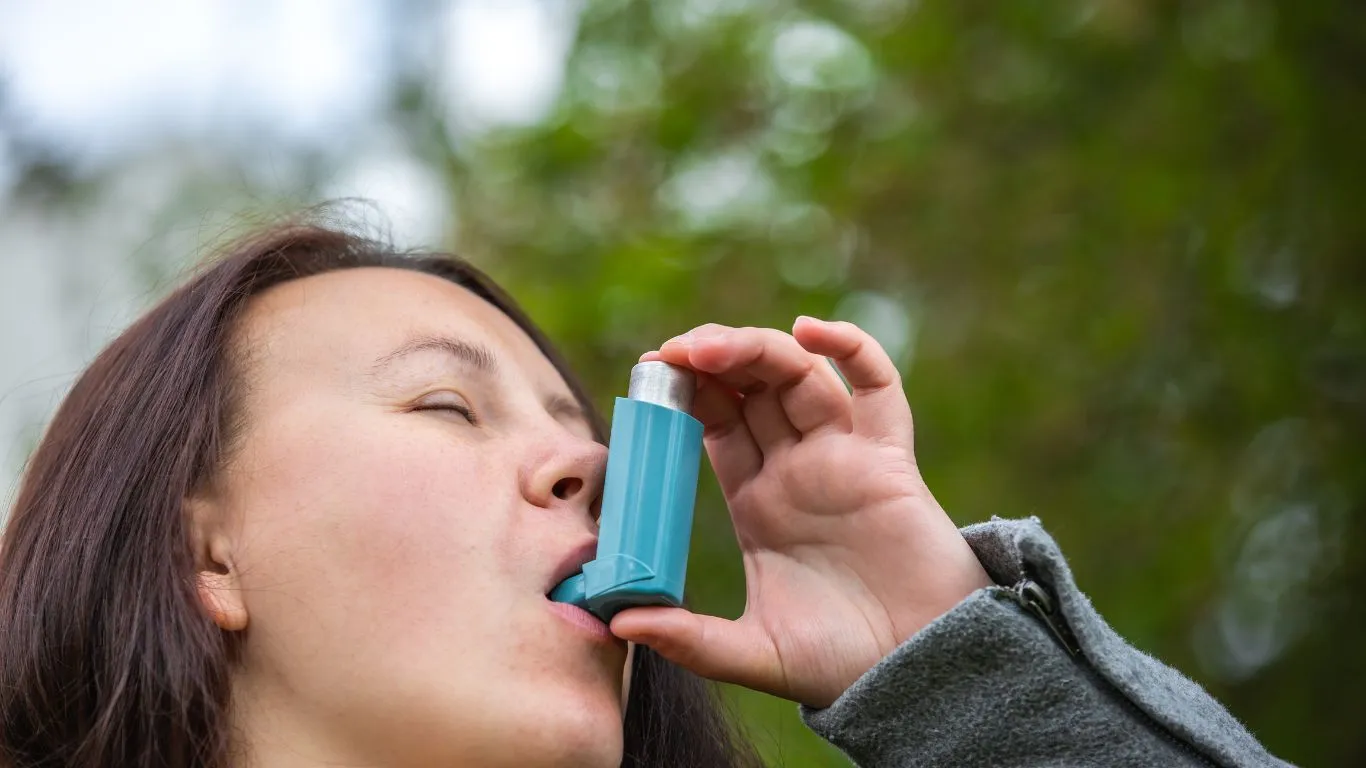Can Exercise Help Reduce Asthma Symptoms? 🏃♀️💨
Can Exercise Help Reduce Asthma Symptoms? 🏃♀️💨
If you’ve got asthma, you’ve probably wondered whether exercise can actually help make things better—or if it’s just a recipe for an asthma attack. Well, I’ve got good news: with the right approach, exercise can help reduce asthma symptoms. It might sound a little counterintuitive, but stick with me, and I’ll explain why. Let’s talk about how you can breathe a little easier while getting some sweat going.
Exercise and Asthma—How Do They Even Work Together? 🌬️
So, asthma is all about those inflamed, narrow airways that make it harder to breathe, right? Exercise, on the other hand, can actually help by strengthening your lungs and improving your cardiovascular system. When you’re active, you’re basically training your body to be more efficient at getting oxygen in and out. Pretty cool, huh?

Here’s what regular exercise can do for your lungs:
- Better lung function: Strengthening those muscles you use to breathe can help make your airways more efficient.
- Reduced inflammation: Exercise can lower inflammation in your body, which is great for easing up asthma symptoms.
- Better airflow: Over time, your airways become less tight and restricted, which means less wheezing.
- Weight management: If you’re carrying extra weight, losing it can relieve some of the pressure on your lungs. This helps your asthma in the long run.
But here’s the catch: it’s all about doing the right kinds of exercises and knowing how to take care of yourself.
Troubleshooting Common Issues 🛠️
Let’s be real—exercising with asthma can have its hiccups. But with a few tips, you can totally avoid some common problems.

1. Exercise-Induced Bronchoconstriction (EIB) 🏃♂️💨
Ever gone for a run and suddenly found yourself wheezing, coughing, or feeling like you can’t catch your breath? That’s a thing called exercise-induced bronchoconstriction (EIB), where your airways tighten up during physical activity. It’s super common for people with asthma.
What to do?
- Use your inhaler before exercising—this can help keep symptoms in check.
- Do a proper warm-up and cool-down. It helps your body gradually adjust to the change in activity levels.
- Avoid extreme weather conditions like cold, dry air or pollution. They can make things worse.
2. Asthma Flare-Ups During Intense Workouts 🏋️♂️
Sometimes, you push yourself a little too hard, and bam—you’ve got a full-on flare-up. It’s a bummer, but you don’t have to quit working out altogether.
What to do?
- Don’t go full throttle. Start slow, especially if you’re new to exercising or trying a new activity.
- Stay hydrated! This sounds simple, but dehydration can make asthma worse.
- Opt for low-impact activities like swimming or yoga. They’re usually gentler on your lungs.
3. Anxiety About Exercising with Asthma 😬
It’s totally understandable if you feel anxious about working out with asthma. Sometimes the thought of triggering an attack is enough to make you want to skip the gym.
What to do?
- Calm your nerves with deep breathing techniques before you even start exercising.
- Gradually work your way up. If running a mile feels like too much, walk for a bit, then jog, and build it up slowly.
Real-Life Success Stories 📖
Let’s talk about a couple of folks who made exercise work for their asthma. It’s not just wishful thinking—it can be done.

Sarah’s Swim Success 🏊♀️
Sarah was diagnosed with asthma when she was a kid. Growing up, she always thought exercise was off-limits because of her breathing problems. But after chatting with her doctor, she decided to try swimming—a low-impact, asthma-friendly exercise.
She started out slow, using her inhaler before swimming and gradually building up endurance. After a few months, Sarah noticed she was breathing better, and her asthma attacks were fewer. She now swims three times a week and feels stronger than ever. Her advice? If swimming works for you, give it a try!
Tom’s Weight Loss Journey 🏋️♂️
Tom was struggling with his asthma and also carrying around a little extra weight. His doctor suggested he get moving, but Tom was hesitant at first. He started with walking, then worked up to cycling and light strength training. Guess what? As he lost weight, his asthma symptoms improved too. Less weight = less pressure on his lungs.
Now, Tom works out regularly and says his asthma is much more manageable. If you’re dealing with asthma and weight issues, his story might hit home.
Key Takeaways 📌
Here’s the bottom line:
- Exercise can help reduce asthma symptoms—it’s all about building up your lung strength and improving airflow.
- Start slow and be kind to your body. Don’t push too hard in the beginning.
- Hydrate, warm up, and cool down—simple but effective.
- Success stories prove it’s possible to exercise and control asthma with the right approach.
FAQs 🤔
Is exercise safe for people with asthma?
Yep, it’s totally safe—as long as you’re careful. Talk to your doctor first, and take things one step at a time.
What type of exercise is best for asthma?
Low-impact activities like swimming, walking, and cycling are usually good choices. They let you stay active without putting too much strain on your lungs.
Can exercise make asthma worse?
It can, especially if you go too hard too fast. But with the right precautions, most people with asthma can exercise without a problem.
How long should I exercise if I have asthma?
Start with about 10-15 minutes, then build up to 30 minutes or more. Listen to your body!
Disclaimer ⚠️
Just a heads-up: the info here is meant to help you get started, but it’s not a replacement for professional medical advice. Always check in with your doctor before starting a new exercise routine.
Call to Action 🏅
Ready to get moving? If you’ve been holding back because of your asthma, now’s the time to start small and see how exercise can help you breathe easier. And hey, share your own success stories with me—I’d love to hear how you’re making exercise work for your lungs!

Bianca Nala is a compassionate Nurse Practitioner with a strong background in primary and respiratory care. As a health writer for Healthusias.com, she combines her clinical expertise with a talent for clear, relatable storytelling to help readers better understand their health. Bianca focuses on topics like asthma, COPD, chronic cough, and overall lung health, aiming to simplify complex medical topics without losing accuracy. Whether she’s treating patients or writing articles, Bianca is driven by a single goal: making quality healthcare knowledge accessible to everyone.






